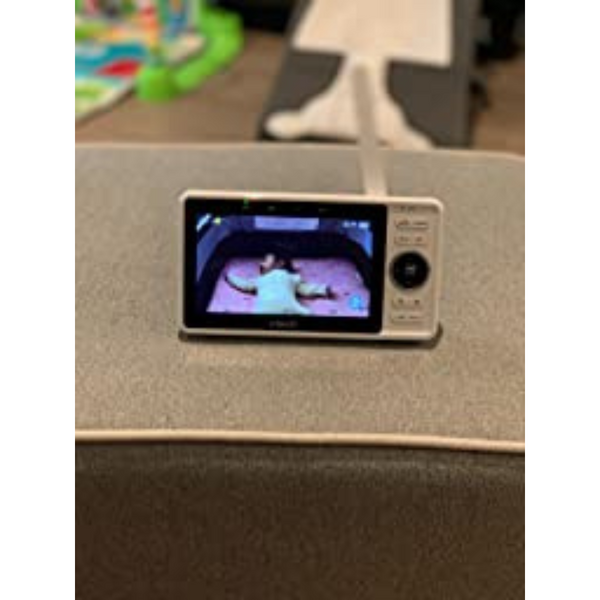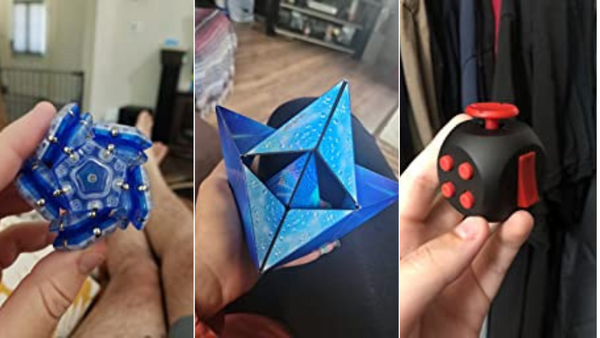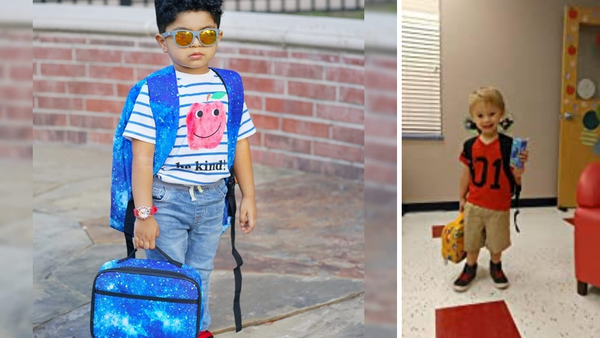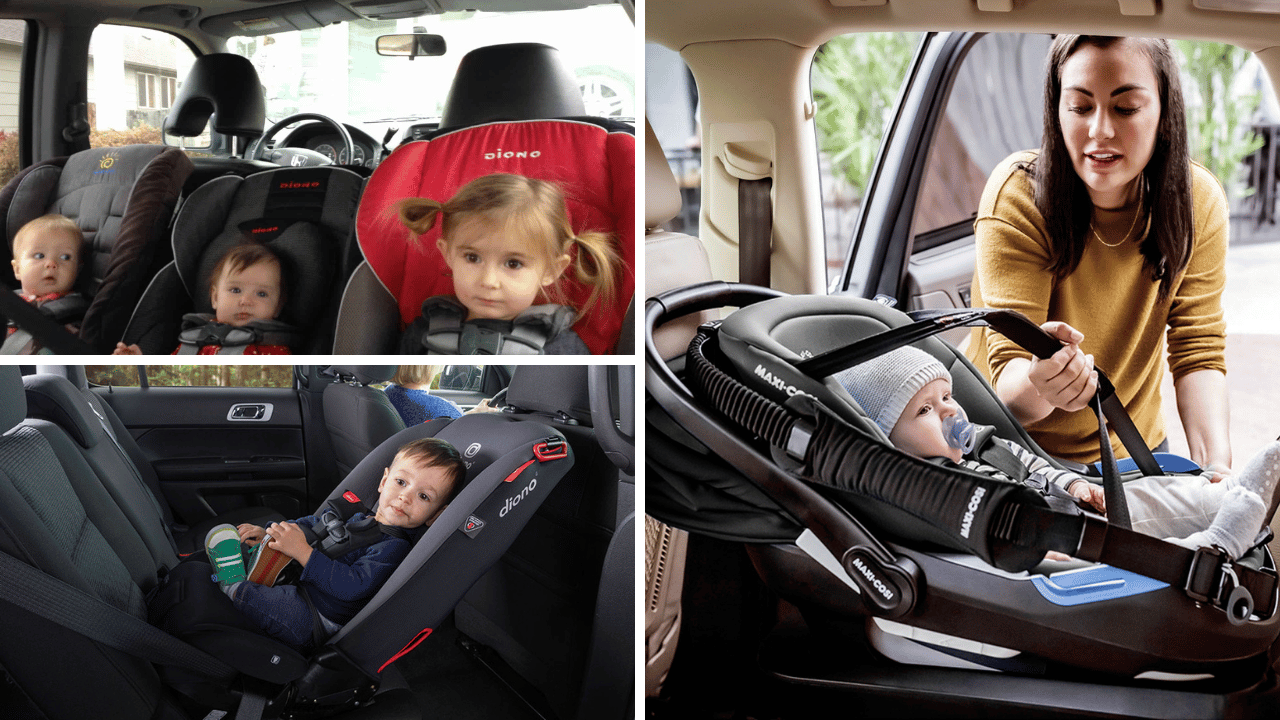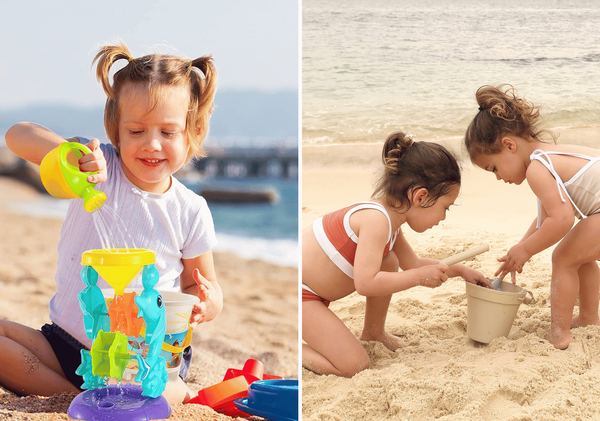If you are a breastfeeding mom, you will need to use bottles at some point!
We have put together a list of the 5 best bottles for breastfed babies. This list includes both plastic and glass bottles, so you can choose the one that is best for you.
We know how important it is to find the right bottle for your baby. That is why we have made this list of the 5 best bottles for babies. We hope that this will help make your decision easier!
How We Choose The Best Bottles for Breastfed Babies
It can be hard to know which bottles are best for babies.
You want to do what's best for your baby, and that includes finding the right bottle to make the transition from the breast to formula or solids easier.
We've done the research for you and found the top 5 bottles for breastfed babies. Our list includes a variety of bottles made from different materials with different nipple shapes and flow rates to accommodate every breastfeeding mom and baby.
Our Top Picks:

Best Bottle for Transition from Breast to Bottle
Lansinoh Momma Breastmilk Feeding Bottle
Why We Love It
The Lansinoh Momma Breastmilk Feeding Bottle is the perfect choice for moms who want the best for their babies. Lansinoh used over 50 years of research to design this bottle, and their hard work paid off.
The nipple on this unique bottle is ergonomically designed to mimic a natural breast, helping baby to use the same sucking motion for each and easing the transition between breast and bottle. There’s also a venting system to reduce air intake and an inner vertical groove on the nipple that prevents collapse.
With all of these features, it’s no wonder that the Lansinoh Momma Breastmilk Feeding Bottle is one of the top choices for breastfeeding moms.
What You Should Know
Momma is a popular brand of bottles that are designed to mimic the breast. Parents rave about the unique nipple design, which is meant to reduce nipple confusion and make it easier for babies to transition from breast to bottle.
Many lactation consultants also recommend Momma as a great bottle for breastfed babies. The angled design of the nipple encourages proper latch, and the wide base with an anti-colic valve helps prevent colic. In addition, the Momma bottles are made of BPA-free plastic and are dishwasher safe.
Whether you’re looking for a bottle that will make your life easier or one that will help your baby transition from breast to bottle, Momma is a great option.
Why We Love It
If you’re looking for a bottle that’s perfect for breastfeeding, look no further than the Joovy Boob Glass Bottle. Recommended by lactation consultants, this bottle has a gradually sloped nipple that promotes a natural latch.
Additionally, the venting system prevents nipple collapse and colic symptoms. The included silicone sleeve makes it easy to grip and less likely to break if dropped. Plus, it’s easy to clean thanks to only a few parts.
Whether you’re a new mom or an experienced pro, the Joovy Boob Glass Bottle is the perfect choice for you and your baby.
What You Should Know
Although they're made of sturdy tempered glass, glass bottles can still break if you drop them. And because they're heavier than plastic bottles, they're more likely to cause damage if they do break.
Plus, glass bottles are usually more expensive than their plastic counterparts. So if you're looking for a durable and cost-effective option, plastic may be the way to go. Just be sure to recycle it when you're done!

Best Anti-Colic Bottle for Breastfed Babies
Dr. Brown’s Natural Flow Original Newborn Bottle Gift Set
Why We Love It
Looking for a tried-and-true bottle for your newborn? Look no further than Dr. Brown’s Natural Flow Original Newborn Bottle! Made with love by parents, babies, and lactation specialists alike, this unique bottle is designed to eliminate air bubbles during feeding – aiding in digestion and reducing the likelihood of gas, spit-up, and even colic.
Plus, thanks to their special design, these bottles have been proven to help better preserve milk nutrients. So whether you’re a first-time parent or a seasoned pro, rest assured that Dr. Brown’s bottles have you (and your baby) covered!
What You Should Know
If you're planning on using bottles to supplement your milk or to feed your baby expressed milk, then you'll want to purchase a good quality bottle. The Dr. Brown's Natural Flow Bottle is a great option, and many lactation consultants recommend purchasing the preemie nipple to help babies transition to the bottle.
These bottles have a lot of parts to clean, but many parents love them so much that they don't mind. The level one slow-flow nipple is included with this set, but you may want to purchase additional bottle nipples if you plan on using them frequently.
Overall, Dr. Brown's Natural Flow Bottle is a great option for parents who are looking for a good quality bottle that their baby will love.
Why We Love It
Listen up, nursing and pumping parents! If you're looking for a more efficient way to store and feed your milk, the Kiinde Twist system is the answer. This all-in-one system lets you pump right into the storage pouch, then attach a bottle nipple and casing when it's time to feed. No more transferring milk or washing bottles!
The Kiinde Twist gift set includes everything you need to get started: 20 storage pouches, 14 adapters (compatible with all major pump brands), a breastmilk storage bag holder, a bottle warmer, two bottle casings, three different slow-flow bottle nipples, and two cleaning brushes.
What You Should Know
Any parent who has tried to pump and store breast milk knows that it can be a costly endeavor. Not only do you have to buy a pump, but you also need storage bags - and those can’t be reused.
If you’re pumping a lot of milk, the cost of the bags can really add up. However, there is a way to save money on storage bags. Instead of buying them individually, you can purchase a storage bag system like Kiinde.
The Kiinde system comes with a starter set of bags, but you can also purchase refills in bulk. Plus, the Kiinde bags are self-standing, so you don’t have to worry about them tipping over and spilling your priceless milk.
And if your baby doesn’t like the Kiinde nipples that are included in the set, you can purchase adapters and attach nipples from other bottle brands to the bottle casing when it’s time to feed.
So if you’re looking for a way to save money on milk storage, the Kiinde system is definitely worth considering.

Best Bottle for Breastfed Babies to Preserve Nutrients
Nanobébé Baby Bottle Starter Kit
Why We Love It
Looking for a bottle that will help your little one get the most out of their milk? Look no further than the Nanobébé Bottle Starter Kit!
These unique bottles are short and wide, with a rounded shape that helps milk cool and heat twice as fast as standard bottles. That means all the nutrients in your precious breast milk will stay intact, making it more nutritious for your baby.
The kit comes with two breast pump adapters, two pacifiers, and a non-electric warming bowl that’s specially designed to gently and evenly warm your milk.
What You Should Know
If you're the type of person who loves to keep things organized, these bottles are definitely for you. They're stackable, so they take up less space in your cupboard or diaper bag.
Nanobébé also makes a silicone bottle that our editors and parents love. It comes in a variety of colors and is dishwasher safe.
Plus, it's soft and flexible, so it's easy to hold for both baby and parent. Whether you're looking for compact storage or an easy-to-use bottle, Nanobébé has you covered.
When to Start a Bottle for a Breastfed Baby
It can be difficult to know what kind of bottle to buy for your baby. With so many different options on the market, it can be hard to know where to start. However, experts say that the most important factor is not the brand or the size of the bottle, but the nipple.
When choosing a nipple, look for one with a gradual slope. This encourages baby’s mouth to open wider and can help them achieve a deep latch. However, every baby is different, and some babies will have no problem drinking from a bottle with a wider nipple base.
Instead of committing to a full set of a single-bottle brand, buy one of a few different brands to see what your little one prefers. We also remind parents to focus on the nipple rather than the bottle, always choosing a slow-flow nipple option. What’s a slow milk flow nipple to one brand may not be slow at all for another.
The perfect bottle for your baby is the bottle that your baby will take.
How to Introduce a Bottle to a Breastfed Baby
Here are a few things we recommend when introducing the bottle:
Paced Feeding
If you're bottle feeding your baby, it's important to be aware of how you're pacing the feedings. Just as breastfed babies tend to pause often while feeding, you'll want to make sure you're pacing bottle feedings as well.
This ensures that the faster flow of the bottle nipple doesn't get overwhelming. So, every few minutes, pause and let baby take their time on the bottle. This also prevents them from preferring a fast, easy bottle and deciding that nursing at the breast is too hard.
By being mindful of how you pace bottle feedings, you can help ensure that your baby gets the nutrition they need and prevent any feeding difficulties down the road.
Upright hold
When you bottle-feed your baby, it's important to try to mimic the position they would be in if they were nursing at your breast. Most people tend to hold babies horizontally when bottle-feeding, but this can actually make it easier for milk to flow into baby's mouth without them having to work for it.
Instead, try holding your baby upright with the bottle parallel to the floor. This will make them suck harder to get the milk, which is more similar to the way they need to suckle at the breast.
Additionally, this position will help to prevent ear infections, as milk is less likely to flow into the inner ear when your baby is in an upright position. With a little practice, you'll be a pro at bottle-feeding in no time!
Some babies will transition from breast to bottle with hardly any issues at all. For others, though…it’s not that easy. We have outlined some tips for an easier transition.
Start Slow
Many new parents worry about how they will keep their breastfed baby fed when they return to work or school. While it is possible to pump milk ahead of time, some babies resist taking a bottle.
We recommend using slow-flow nipples and starting with one feeding each day to get your baby used to taking a bottle. This can be a full feeding or even a few ounces, but the key is to start slow and build from there. If you are away from your baby during a feeding, try offering the bottle when your baby is sleepy or just after a feeding.
You may also want to have someone else give the first few bottles so that your baby does not associate the bottle with you being away. With a little patience and practice, most babies will learn to take a bottle without any problem.
Set the Stage for Success
Two o’clock in the morning may not be the best time to introduce a breastfed babe to their first bottle. The same goes for a particularly tired or cranky day. For the best shot at success, pick a time of day when baby (and whoever is doing the feeding!) is in a good mood.
A calm and relaxed environment will help baby feel comfortable and encourage them to take to the bottle without too much stress or fuss. Plus, it’s just more enjoyable for everyone involved if everyone is feeling happy and relaxed!
So next time you’re thinking about starting baby on a bottle, consider picking a better time of day...your baby (and your sanity!) will thank you for it.
Switch It Up
It's not uncommon for babies to refuse a bottle from the parent who normally nurses them. If you find yourself in this situation, there are a few things you can try. First, ask your partner, a grandparent, or another caregiver to give the bottle a try.
Sometimes, all baby needs is a change of scenery. If that doesn't work, try changing up your own position. Instead of sitting down to feed, try walking around or standing up. You can also try an upright bouncy seat, which will allow you to keep an eye on baby's latch.
With a little patience and trial and error, you'll find a method that works for both you and your baby.
Try, Try and Try Again
Introducing the bottle can be a stressful experience for both baby and parent. It's important to stay patient and not get frustrated if things aren't going smoothly at first. Just like breastfeeding, taking a bottle is new to both you and your baby, so it may take some time to get the hang of it.
If you can tell that things aren't working out, it's best to put away the bottle and try again later. With a little patience and persistence, you'll eventually be able to successfully introduce the bottle to your little one.
Bottles For Breastfed Babies FAQs
It can be hard to know which type of bottle is best for your breastfed baby.
You may have heard that you should only use bottles designed specifically for breastfed babies, but it can be hard to know which type of bottle is best for your little one.
We've created this guide to answer the most frequently asked questions about bottles for breastfed babies. Our guide includes information about different types of bottles, nipples, and lids, as well as tips on how to transition your breastfeeding baby to using a bottle.
What bottles are the best for breastfed babies?
It depends on the baby's age. For newborns, many experts recommend using bottles that are shaped like breasts, such as Joovy Boob Glass bottles. These bottles are designed to make it easier for a baby to latch on and feed.
For babies who are a bit older, some experts recommend using wide-necked bottles instead of narrow-necked ones, since it can be more difficult for a baby to suck milk from a narrow-necked bottle. Additionally, Dr. Brown's offers bottles that have internal tubes that help to create negative pressure and simulate breastfeeding. This design is beneficial for premature or low birth weight babies.
Is it ok for a breastfeeding mom to give a bottle?
Yes, it's fine for a breastfeeding mom to give her baby a bottle. In fact, it can even be helpful, as it can allow the mother to take a break from breastfeeding. The important thing is to make sure that the baby gets plenty of breastmilk when she is breastfeeding so that she continues to get the nutrients she needs.
What bottles do pediatricians recommend?
For newborns, many pediatricians recommend using bottles that are designed to reduce the incidence of gas and spit-up. These bottles have a vent on the bottom that helps to create an even flow of milk, which reduces the amount of air your baby swallows.
There are also a number of different bottle sizes and shapes available, so you may want to experiment until you find one that your baby seems to prefer. Some babies do well with bottles that are angled slightly upward, while others do better with straight-shaped bottles. You may also want to try different nipples to see which one your baby prefers.
When should you offer a breastfed baby a bottle?
It's best to offer a breastfed baby a bottle when you will be absent for an extended period of time and need to provide milk for the baby.
The baby will be able to drink more milk from a bottle than from a breast, so the bottle can act as a supplement to breastfeeding. If you are introducing a bottle for the first time, try to wait until the baby is at least four weeks old and has established good nursing habits.
What are the 4 types of feeding bottles?
There are four types of feeding bottles: disposable, glass, plastic and stainless steel. Disposable bottles are made of plastic and can be thrown away after use.
Glass bottles can be reused but need to be sterilized between uses. Plastic and stainless steel bottles are both reusable but must be cleaned regularly.
How do you choose the right bottle for your baby?
When choosing the best baby bottles, there are a few things to consider. The type of bottle nipple, the size and shape of the bottle, and the material from which the bottle is made all play a role in how well your baby takes to it.
Nipples come in different shapes and sizes, so it's important to choose one that is best suited for your baby's mouth. Some nipples are shaped like a woman's breast, while others are more cone-like. The size of the nipple also matters; if it is too large or too small, your baby may have difficulty sucking on it.
The size and shape of the bottle are also important factors to consider.
Do you need to sterilize glass baby bottles?
Yes, you should sterilize glass bottles to prevent the growth of harmful bacteria. You can do this by boiling the bottles in water for five minutes or by using a sterilizing solution.
How do you dry bottles after sterilizing them?
After sterilizing the bottles, you can dry them with a clean cloth or paper towel. You can also use a bottle brush to clean the inside of the bottles.
If you are using a dishwasher to sterilize your bottles, be sure to air dry them afterward. Do not put them back in the dishwasher until they are completely dry. Putting wet bottles back in the dishwasher can cause mold to form inside the machine.
Can you use regular dish soap on bottles?
Yes, you can use regular dish soap on bottles. In fact, it's one of the best ways to get them clean. Dish soap is effective in removing grease and dirt, and it's also gentle enough to be used on delicate surfaces like glass. Just make sure to rinse the bottles thoroughly afterward to remove any leftover soap residue.
Do breastfed babies need bigger bottles?
No, breastfed babies do not need bigger bottles. They will drink whatever amount of milk their small stomach can hold. Formula-fed babies, on the other hand, usually need to drink from a bottle that is larger in size so that they can consume the same number of calories as a breastfed baby.
This is because formula takes up more space in the stomach than breastmilk does. Breastmilk is more easily digested and takes up less space in the stomach than formula does. This is one of the reasons why breastfed babies tend to be thinner and have smaller waistlines than formula-fed babies.
How many bottles do you need for a newborn if breastfeeding?
You will need about six to eight 8-ounce bottles a day if you are exclusively breastfeeding your newborn. If you are supplementing with formula, you will need more bottles.
Best Bottles For Breastfed Babies For You
We know that you want the best for your breastfed baby, and we hope that our hours of research have helped you find the perfect bottle for your little one. We’ve compiled all of our findings in an easy-to-use format so that you can make a decision quickly and get back to what really matters: spending time with your baby. So tap the button now to check the price of the best bottles for your needs.
Thanks for reading and Happy Shopping!
Best Bottle for Transition from Breast to Bottle
Lansinoh Momma Breastmilk Feeding Bottle
Best Glass Bottle for Breastfed Babies
Joovy Boob Glass Bottle & Sleeve
Best Anti-Colic Bottle for Breastfed Babies
Dr. Brown’s Natural Flow Original Newborn Bottle Gift Set
Best Bottle for Pumping Parents
Kiinde Twist Breastfeeding Gift Set
Best Bottle for Breastfed Babies to Preserve Nutrients
Nanobébé Baby Bottle Starter Kit




